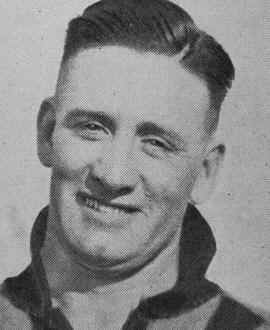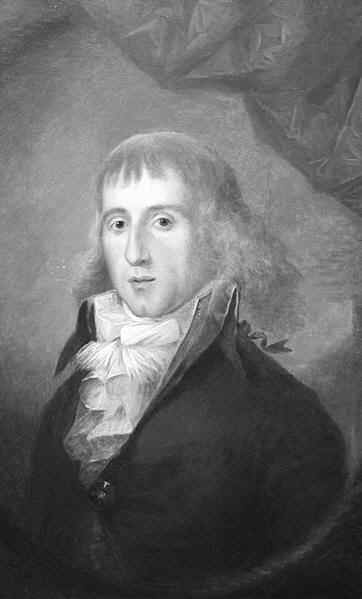|
| |
Family Notes - December 2018
This is a sample of the information
provided to members of the P*rr*tt Society in the most recent edition of Family
Notes. Family Notes is a 56-page printed magazine that is distributed to society
members every quarter.

PARLIAMENTARY P*RR*TTS
In the course of his research into Sir Richard Perrot, Bob Turner (member
2004) reviewed The Journals of the House of Commons from 1714 to 1787 for
any P*rr*tt entries and found a number of items of interest.
GEORGE PERROT
George was the son of Thomas Perrot and Anastasia Plaxton, the grandson of
Andrew Perrot and Martha Vanlys and the great-grandson of Richard Perrot and
Dorothy Harris. This Perrot family resided in Yorkshire according to Banwell’s
Perrot Notes, the accuracy of which has been discussed previously in Family
Notes, Andrew Perrot had twenty children and Thomas Perrot had eleven
children. George was educated at Westminster School, admitted to the Inner
Temple in 1728 and called to the bar in 1732. He became a bencher of the Inn in
1757 and King’s Counsel in 1759. George retired in 1775 having been “seized with
a fit of palsy” during the Lent assizes at Maidstone and thereafter received a
pension of 1,200 pounds per year. According to the National Archives currency
converter, this is the equivalent of just over £100,000 per year today, so quite
a substantial sum. He married Mary Bower in 1742 but the couple left no
children. In the accounts of monies paid by the Exchequer George is first listed
as receiving £26 18s ¾d as “one of his Majesty’s Counsel at Law. A number of
subsequent annual payments for his services in his capacity as Baron of the
Exchequer are also recorded for varying amounts. George is also named as a
petitioner in relation to a bill proposing the building of a canal between
Coventry and Oxford and as a subscriber to ‘Thomas Hale’s Social Harmony’ (as is
John Parrott of Middlewich in Cheshire). This was a book of songs for several
voices in harmony which included a number of songs about masonry.
WILLIAM PARROT
In 1715 the custom house on Thames Street was destroyed by fire, resulting in
the loss of stock belonging to several London merchants. The building was
relatively new, having been built after its previous incarnation was destroyed
in the Great Fire in 1666. William Parrot claimed the loss of a significant
quantity of sugar. Parliament subsequently agreed – following some debate about
amendments with the House of Lords – to “An [Private] Act for the Relief of Anne
Milner, Thomas Colmore, William Hunt, William Parrot and others, as to customs
of goods, burnt or destroyed by the late fire in Thames-Street, London”.
PHILIP PARROTT
Philip is named as a petitioner in relation to enclosures in the parish of
Dorrington in 1787. There are two places called Dorrington in the UK – one in
Shropshire and one in Lincolnshire. Most likely this refers to Philip Parrott
who was born in Hatton, Lincolnshire in 1744, the son of John Parrott and
Susannah Phillips. He married Mildred Jackson in Rand, Lincolnshire in 1767.
JOHN PERROT
John Perrott received payments from the Exchequer as “one of the Secondaries
in the Remembrance’s Office in the Court of Exchequer”. He had begun his career
as a Junior Sworn Clerk in 1753 and succeeded his brother George in 1762 as
Third Sworn Clerk when George was promoted to be a Baron of the Exchequer. He
subsequently became a Second Secondary in 1766 and finally reached the post of
First Secondary in 1769 following the death of the previous incumbent. His
ancestry is as per that of George Perrot on the previous page.
JOHN PERROTT
Another John who appears in the journal is John Perrott (1702-1776) the Lord
of the Manor of Brians Bell in Belbroughton, Worcestershire. He is perhaps best
known as the creator of Perrott’s Folly in 1758. He petitioned Parliament
regarding enclosures in Belbroughton asking that “Leave may be given to bring in
a Bill for dividing, inclosing, and allotting, the said Common or Waste Ground
called Bell Heath, in the Manor of Brians Bell, in the Parish of Bellbroughton,
in the County of Worcester aforesaid, unto and amongst the several Persons
interested therein, in such Manner as the House shall seem meet”.

It's in the Papers
We’ve scoured the pages of newspapers recently added to the British Newspaper
Archive website to bring you some P*rr*tt-related articles.
COVENTRY EVENING TELEGRAPH (UK) – 7th May 1959
After 47 years’ service with the B.T.H., Mr. W. A. Perrett, a senior
designer in the Motor Engineering Department of the Rugby Works, retired
yesterday. He joined B.T.H. in the test department after graduating from Bristol
University. During the First World War he served in France and afterwards in the
Indian Army until 1922. During his service on the North West Frontier, he was
mentioned in Despatches. He returned to the B.T.H. and transferred to the supply
department on commercial work. He joined the D.C. Engineering Department in
1936. He is an associate member of the Institution of Electrical Engineers and
has made several contributions to both design and progressive development during
his years with B.T. H. Colleagues presented him with a fireside chair, a garden
spade and wheelbarrow. Mr. Perrett is leaving Rugby to live at Rustington,
Sussex.
TAVISTOCK GAZETTE (UK) – 6th August 1880
At the last meeting of the Royal Humane Society, held at the society’s
office, Trafalgar-square, London, a long list of cases of saving or attempting
to save life in various parts of the world was investigated, and rewards were
conferred … The bronze medallion was unanimously voted … to Nathan Parrott for
attempting to save J. F. Pasquier, who was knocked overboard by a heavy sea.
TAVISTOCK GAZETTE (UK) – 24th March 1882
Miss Agnes Parratt of this place, having terminated her five years’
apprenticeship in the Board School, has been presented with a beautiful fully
bound copy of Hymns Ancient and Modern, (set to music,) by the Vicar and Mrs.
Featherstone; a handsome Japanese tray, by Mr. and Mrs. Sharpe, and an elegant
photographic album by the school children as a mark of their esteem and good
wishes for her future welfare.
TAVISTOCK GAZETTE (UK) – 12th October 1866
On Friday evening, an inquest was held at Lea Green on the body of Frances
Parrett, aged sixty-eight years. During the absence of the servant the deceased
was striking a light on a lucifer match-box, when the end of the match fell on
her dress and in a moment she was enveloped in flames. She was much burnt,
which, with the effects of the fright, caused her death, after lingering in much
agony. Verdict, “Accidental death”.
TAVISTOCK GAZETTE (UK) – 26th November 1886
Early on Friday morning a burglar was discovered on the premises of Mr.
Parrott, farmer, of Shipton-on-Cherwell, and on finding that he had alarmed the
inmates he endeavoured to make off. Mr. Parrott, after calling upon the fellow
to stop, fired his gun, bringing the man down with a charge of shot in the
shoulder. On being removed to the Radcliffe Infirmary at Oxford the burglar gave
the name of Thomas Wilson, and a London address was found in his hat. A quantity
of plate had been packed ready for removal.

 A
P*RR*TT PHOTO GALLERY A
P*RR*TT PHOTO GALLERY
|
 |
This photograph appears online with the caption
“Photo of Rupe Perrett in 1931” with the source given as Collingwood
Football Club. This is an Australian rules football club based in
Melbourne and the man pictured is Rupert Percival Perrett
(1909-1966). He was a grandson of George Walter Perrett
(1821-1903) from Pewsey, Wiltshire who emigrated to Australia on the
Victory in 1853 with his first wife and three sons. |
| Benjamin Parrott Homer (1761-1838)
is pictured here in a painting by the artist Christian Gullager.
He was the son of Benjamin Homer and Mary
Parrott (the daughter of Bryant Parrott and Ruth Wadsworth).
Benjamin married Abigail Pearce and had nine children, only three
of whom – Fitzhenry, Mary and Georgiana – survived him.
Benjamin’s father and grandfather were merchants in
the East India Company and he followed in their footsteps during his
career. |
 |

|